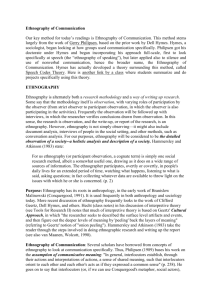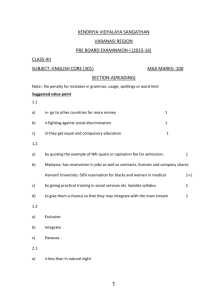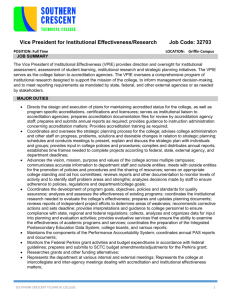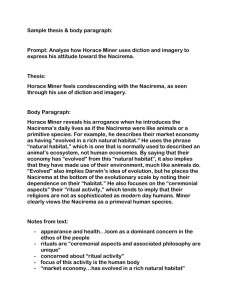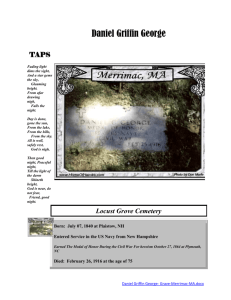COM319 Artifact
advertisement
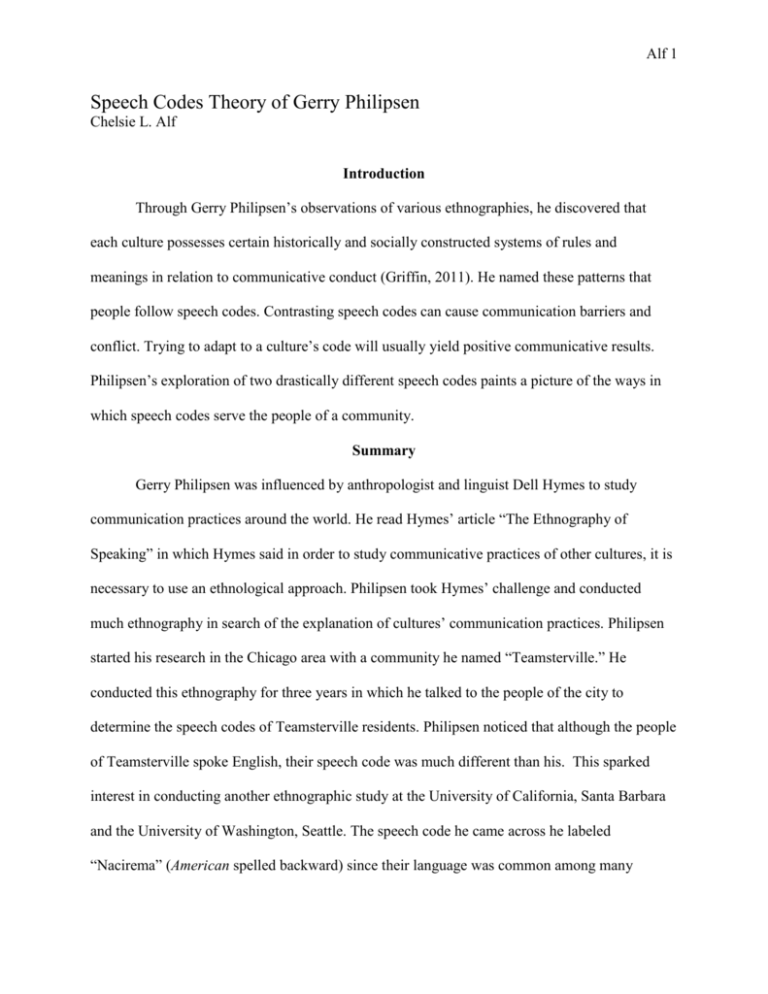
Alf 1 Speech Codes Theory of Gerry Philipsen Chelsie L. Alf Introduction Through Gerry Philipsen’s observations of various ethnographies, he discovered that each culture possesses certain historically and socially constructed systems of rules and meanings in relation to communicative conduct (Griffin, 2011). He named these patterns that people follow speech codes. Contrasting speech codes can cause communication barriers and conflict. Trying to adapt to a culture’s code will usually yield positive communicative results. Philipsen’s exploration of two drastically different speech codes paints a picture of the ways in which speech codes serve the people of a community. Summary Gerry Philipsen was influenced by anthropologist and linguist Dell Hymes to study communication practices around the world. He read Hymes’ article “The Ethnography of Speaking” in which Hymes said in order to study communicative practices of other cultures, it is necessary to use an ethnological approach. Philipsen took Hymes’ challenge and conducted much ethnography in search of the explanation of cultures’ communication practices. Philipsen started his research in the Chicago area with a community he named “Teamsterville.” He conducted this ethnography for three years in which he talked to the people of the city to determine the speech codes of Teamsterville residents. Philipsen noticed that although the people of Teamsterville spoke English, their speech code was much different than his. This sparked interest in conducting another ethnographic study at the University of California, Santa Barbara and the University of Washington, Seattle. The speech code he came across he labeled “Nacirema” (American spelled backward) since their language was common among many Alf 2 Americans. This type of speech is “generalized U.S. conversation that is carried out at the public level and at the interpersonal lever in face-to-face interaction” (Griffin, 2011, p.421). Philipsen had a main goal to craft a theory that would seek to explain the relationship between communication and culture. This would ultimately help cultural researchers interpret the way in which people speak. His speech codes theory explains the existence of speech codes, how to find them in a community, and their influence within a certain culture. In his interpretive theory which falls under the socio-cultural tradition, he outlined the six general propositions of the theory. The first proposition is, “wherever there is a distinctive culture, there is to be found a distinctive speech code” (Griffin, 2011, p.422). Philipsen found that the codes differed between Teamsterville and Nacirema. Teamsterville focused mostly on cultural unity and did not welcome diversity. The Nacirema used speech to show psychological uniqueness. People within specific cultures take their speech codes for granted; a quality that Philipsen said is very common. The second proposition is, “In any given speech community, multiple speech codes are deployed” (Griffin, 2011, p.423). In Teamsterville, men define their speech by contrasting it with various codes. The Nacirema also vary in dialogue and move between multiple speech codes. Dell Hymes also pointed out that a community could be operating under more than one code meaning that people may be affected by other codes or use more than one. The third proposition that Philipsen described is, “A speech code involves a culturally distinctive psychology, sociology, and rhetoric” (Griffin, 2011, p.424). Speech codes will always depict structures of self, society and strategic action. Speech codes depict individuals in different ways. For example, the Teamsterville code focused on numerous social roles and steered focus Alf 3 away from the individual whereas Nacirema code zeroed in on an individual and their uniqueness. Much like Aristotle’s claims about the importance of rhetoric, every speech code aims at discovering truth and creating persuasive appeals. The fourth proposition says, “The significance of speaking depends on the speech codes used by speakers and listeners to create and interpret their communication” (Griffin, 2011, p.425). Each culture has the opportunity to decide what their speech means. For instance, the word communication held high meaning for the people of Nacirema, but the people of Teamsterville, although they knew the word and used it occasionally, did not regard it as very important. If outsiders want to learn the code of a culture, they must listen to the culture’s speech and respond to it. Next, the fifth proposition states, “The terms, rules, and premises of a speech code are inextricably woven into speaking itself” (Griffin, 2011, p.427). Philipsen felt that analyzing the speech of native speakers would present the code of any culture. In addition, totemizing rituals which involve paying homage to sacred objects through performance of structured sequences, offer another way to analyze a culture’s speech code. The Nacirema believed the communication ritual was the most important to solve all problems. The last proposition says, “The artful use of a shared speech code is a sufficient condition for predicting, explaining, and controlling the form of discourse about the intelligibility, prudence, and morality of communication conduct” (Griffin, 2011, p.428). This means that if cultures are subject to a certain speech code, they still have the ability to resist it. Metacommunication, talk about talk, is a key feature of the speech codes theory and proposition six suggests that people can guide metacommunication through the thoughtful use of shared speech codes. Alf 4 Just like Philipsen, Dwight Conquergood engaged in performance ethnography which is “a research methodology committed to performance as both the subject and method of research, to researchers’ work being performance, and to reports of fieldwork being actable” (Griffin, 2011, p.429). Conquergood believed life to be about “performances about performances about performances” otherwise known as metaperformances (Griffin, 2011, p.429). He saw rituals, festivals and games to be metaperformances because the actions were symbolic to the members who performed them. In addition, performance ethnography almost always occurs among oppressed or marginalized groups. Usually this is because non-dominant groups have a strong sense of culture and dignity. Viewing these types of groups can give them more of a voice in society and help other groups to learn about them. Interview In Gerry Philipsen’s interview, Em Griffin was intrigued by Philipsen’s use of ethnography as a research method (Griffin & Philipsen, 2011). This method is something that was not very popular when the two graduated from graduate school. Philipsen commented that he got the idea to do ethnography because it was a practical necessity where he was working in Chicago after graduate school. He said he either had to adjust to their speech pattern or be a complete failure. From conducting numerous ethnographies, he drew conclusions to form speech code theory. Speech codes are grounded in knowledge from ethnographies and Philipsen said are key to understanding the world through different lenses (Griffin & Philipsen, 2011). Philipsen elaborated on his fifth proposition by saying that other speech codes may be unattractive, but trying to adopt them will only better understanding of a culture. Moral behavior in one Alf 5 community may be social deviance in another. Making efforts to view the world through various perspectives helps a person appreciate different cultures. Philisen also made a distinction that the Nacierma society put a large emphasis on unique individualism (Griffin & Philipsen, 2011). Griffin related this to communication scholars and communication departments that focus on interpersonal communication and self-disclosure. These groups value communication just as the Nacirema valued it as a means of understanding each other and clearing any confusion among people. Philipsen came from this Nacirema background, but removed his biases to perform ethnographies and be able to fully enter other worlds around him and explain their speech codes. Relationship to other Theories This theory relates to a few other theories discussed in Communication Theory. In chapter 35 on standpoint theory, Harding and Wood point out that marginalized groups such as women, the poor and racial minorities are the most important subjects of research in providing the most accurate view of the world as opposed to the white male. This relates to speech code theory because marginalized groups are also featured in research mainly due to their strong sense of culture and dignity. They embody their culture making them good subjects for speech code research. Speech codes theory also relates to the chapter on cultural approach to organizations in which Geertz was an ethnographer and made a thick description of the marginalized group that he studied just as Philipsen did. More specifically, Geertz found rituals within the culture that represented multiple aspects of cultural life similar to how Philipsen found the totemizing rituals sacred to a culture’s speech code. In addition to group membership, communication Alf 6 accommodation theory states that people will diverge if the group membership matters. This is relevant to what Philipsen found in his two studied cultures. In chapter 5 symbolic interactionism,” Mead discusses the importance of shared meanings in various cultures. Without symbolic interactionism, cultures would not be able to communicate with each other. Geertz and Pacanowsky describe culture as webs of significance that bind people together. Philipsen studied the people of Teamsterville and Nacirema who displayed shared meanings through their speech codes. Different speech codes are what make a community unique because it is something distinct from other cultures that only the people of that culture understand. Critiques of the Theory Application Log This theory is very relevant to interpersonal communication. I can apply it to my own life every time I step outside my comfort zone and deal with people who may use a different speech code than I am used to. When this happens I have two choices: 1) try my best to conform to the speech code or 2) continue with my own speech code which I feel comfortable with. The problem with sticking to what I know is that others may not respond in a positive way. If I conform to their code, they may favor my efforts to communicate with them in this way therefore, giving me entrance into their community. Philipsen said that the people of Teamsterville were very collectivistic and were concerned about other peoples’ nationality and origin before they accepted them. If I choose to communicate with my own speech code, it may result in a limited capacity to enter another culture’s world. Thinking back to my trip to the East Coast this summer, at times I adjusted my Southeastern Wisconsin accent and grammar usage to mesh with the society as well as to seem Alf 7 more credible to my boyfriend’s family. On a few occasions, I kept my mispronunciation of “bag” or “rag” because I felt a little lost in the pace of their society and wanted to own my proud Wisconsin roots. Changing speech codes takes work and it is easy to slip up. Making an effort though, made a difference and my boyfriend was quite impressed with me. Other Theorists’ Critique Philipsen is critiqued by feminist and critical perspectives that imply he overlooks power relationships (Griffin, 2011). Specifically, the male hegemony in Teamsterville and the Nacirema patterns of domination are not further assessed. Philipsen defends himself as an ethnographer making it his job not to make an issue of something that is not an issue. He is a firm believer that if power is an issue it will be obvious in the way the culture speaks. Griffin (2011) appreciates the long-term commitment to participant observation that Philipsen endured. He does however criticize his notion to generalize his finding across cultures. Furthermore, Griffin wishes Philipsen would have used more data sets than just the two. His argument is that the Teamsterville and Nacirema codes are too opposite and it would not be fair to categorize the world into those two cultural divisions. Griffin does go on to say that he knows is was not Philipsen’s intention to categorize the cultures into two categories, but there is no evidence to revoke that. Griffin concludes that his critiques are minor in comparison to Philipsen’s accomplishments in the field of ethnography. Philipsen has spread awareness of ethnographical study to other cultural scholars making ethnography more widely known than it used to be. My Critique I agree with Griffin that there are countless other ways to categorize speech codes found in a community. Perhaps a wider spectrum of data would support his findings better and provide Alf 8 more classifications. I think providing a description of more speech codes found among cultures would give the study greater support and yield results that could be relevant to more groups of people. I support Griffin’s statement that Philipsen is a dedicated scholar who has devoted incredible time to his research on speech codes theory. His extensive knowledge gained from ethnographies has helped expand the field and opened doors to learning different ways in which people communicate within a culture. The theory helped me realize the abundance of speech codes I am surrounded by and how understanding those codes and accommodating to them may help my communication with others. Overall, the theory is in line with the interpretive tradition. It provides a new understanding of people by gaining knowledge on various cultures. It clarifies values by bringing others’ values into the open and analyzing them. Speech codes capture aesthetic appeal and contain content and styles with which people either relate to or drastically differ from. Even though the theory does not have extensive pre-existing literature, it sparks a community of agreement among other scholars who support and are intrigued with the theory. Finally, it follows the use of qualitative analysis through the use ethnographies to find patterns of codes among cultures. Conclusion Philipsen added great knowledge to the world of communication by recognizing speech codes among different people. His dedication to the field of ethnography also strengthened the use of the method for future communication scholars. His findings display to others the ways in which people interpret and make sense of their own world. Recognizing codes among cultures will help unite people and break the barriers of miscommunication. Alf 9 References Griffin, E.A. (2011). A first look at Communication Theory, 8th Edition. New York: McGrawHill. Griffin, E.A. (Interviewer), & Philipsen, G. (Interviewee). (2011). Speech Codes Theory. Retrieved from A first look at Communication Theory web site: http://www.afirstlook.com/edition_8/theory_resources/Speech_Codes_Theory
